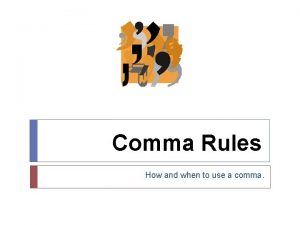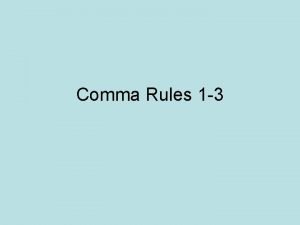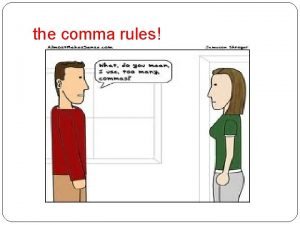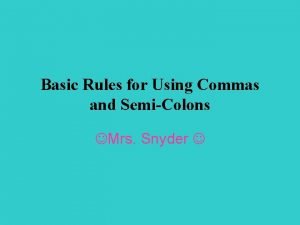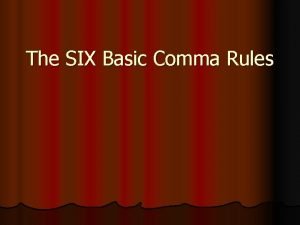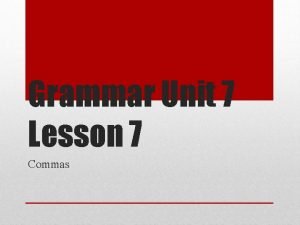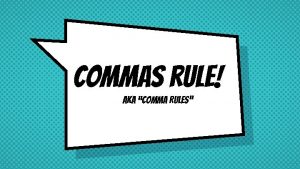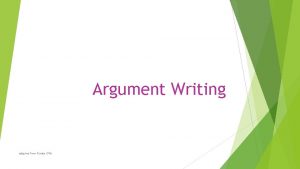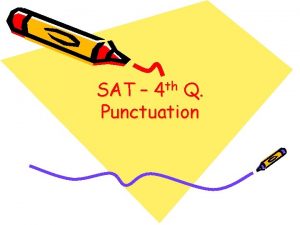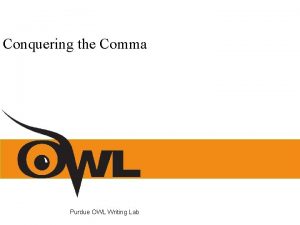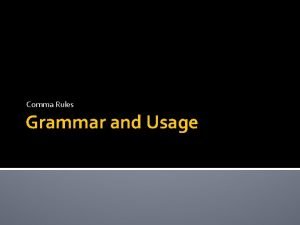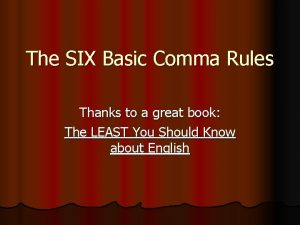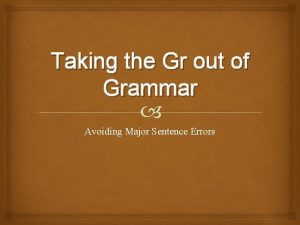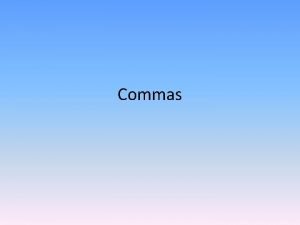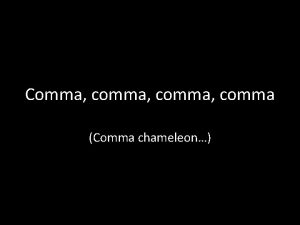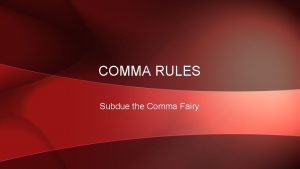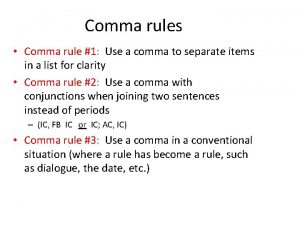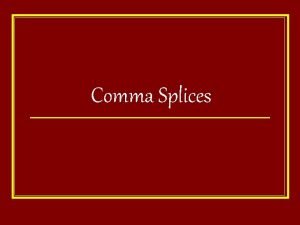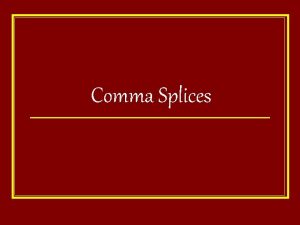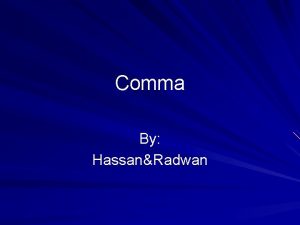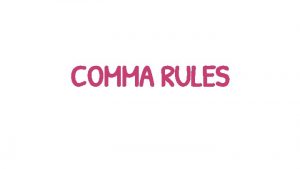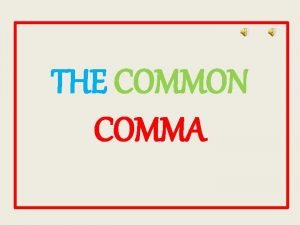Comma Rules Common comma rules with examples 1















- Slides: 15

Comma Rules Common comma rules with examples

#1 - Separate independent clauses 1. Use a comma before any coordinating conjunction (and, but, for, nor, so, yet) that links two independent clauses (phrases that could stand alone as their own sentence).

1. "I went running, and I saw a duck. " Two independent clauses (both COULD stand alone as sentences) “I went running. ” “I saw a duck. ”

#2 - Dependent Clause 2. Use a comma after a dependent clause that starts a sentence.

2. "When I went running, I saw a duck. " Dependent (needs help) = “When I went running” Independent (can stand alone) = “I saw a duck. ”

#3 – Offset Appositives 3. Use commas to offset appositives from the rest of the sentence. Appositives rename something in the sentence.

3. "While running, I saw a mallard, a kind of duck. " "A kind of duck" is the appositive, which gives more information about "a mallard. " Another example: "Brit, a nervous gamer, often sweats while playing Fortnite. "

#4 - Separate a List of Items 4. Use commas to separate items in a series.

4. "I saw a duck, a magician, and a gas station when I went running. "

#5 5. Use a comma after introductory adverbs or phrases.

5. "Finally, I went running. " "Unsurprisingly, I saw a duck when I went running. " "Yes, I saw a duck when I went running. "

#6 - Said Lead-in 6. Use a comma when attributing quotes.

6. The runner said, "I saw a duck" (15). If attribution comes before the quote, place the comma outside the quotation marks. If attribution comes after the quote, put the comma inside the quotation marks. "I saw a duck, " said the runner (15).

#7 - Separate multiple adjectives 7. Use a comma between two adjectives that modify the same noun.

7. "I saw the big, mean duck when I went running. "
 Comma comma comma chameleon meme
Comma comma comma chameleon meme Comma rule 4
Comma rule 4 During comma
During comma Teeth possessive form
Teeth possessive form However comma use
However comma use Basic comma rules
Basic comma rules Lesson 7 - review sentence structures and comma rules
Lesson 7 - review sentence structures and comma rules All comma rules
All comma rules Purdue owl comma rules
Purdue owl comma rules However punctuation
However punctuation Comma splice purdue owl
Comma splice purdue owl 10 comma rules
10 comma rules Six comma rules
Six comma rules Ic dc comma rules
Ic dc comma rules Lies comma rules
Lies comma rules Factors to 18
Factors to 18

